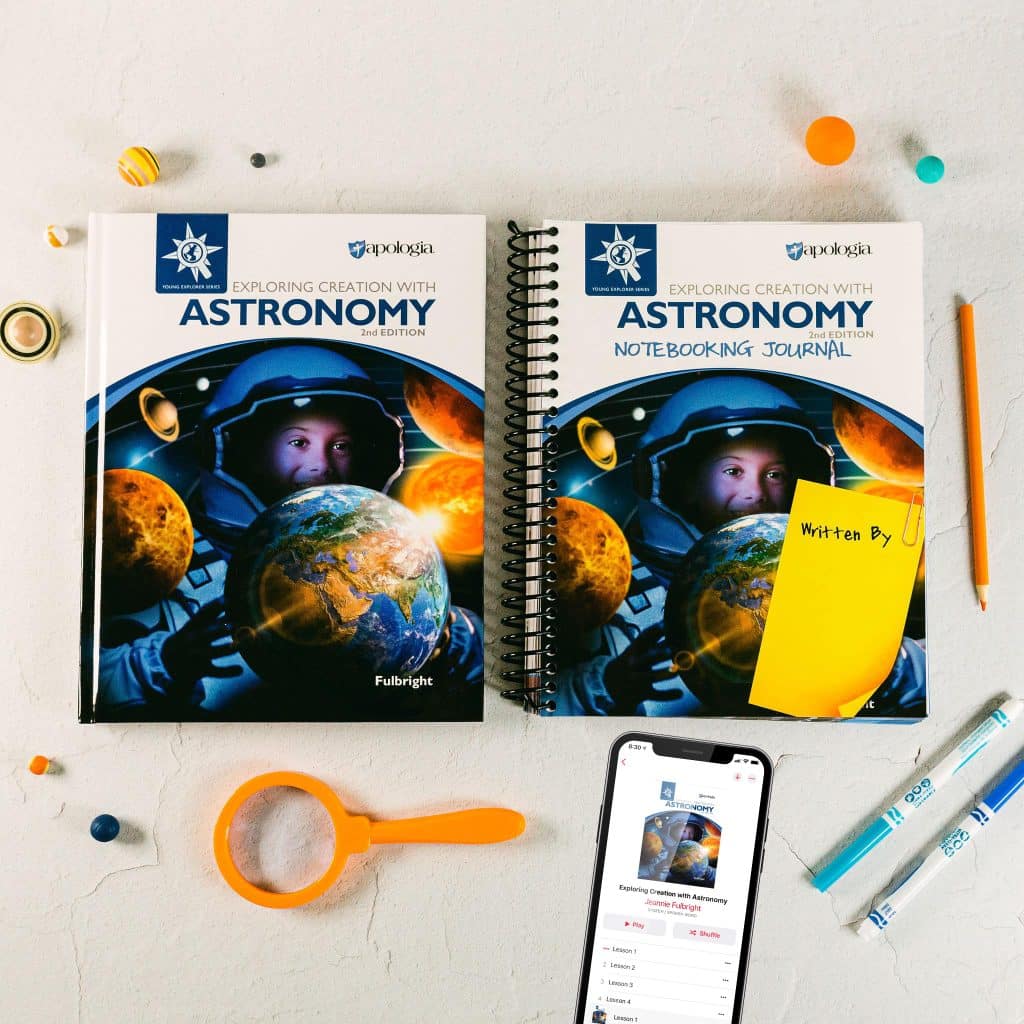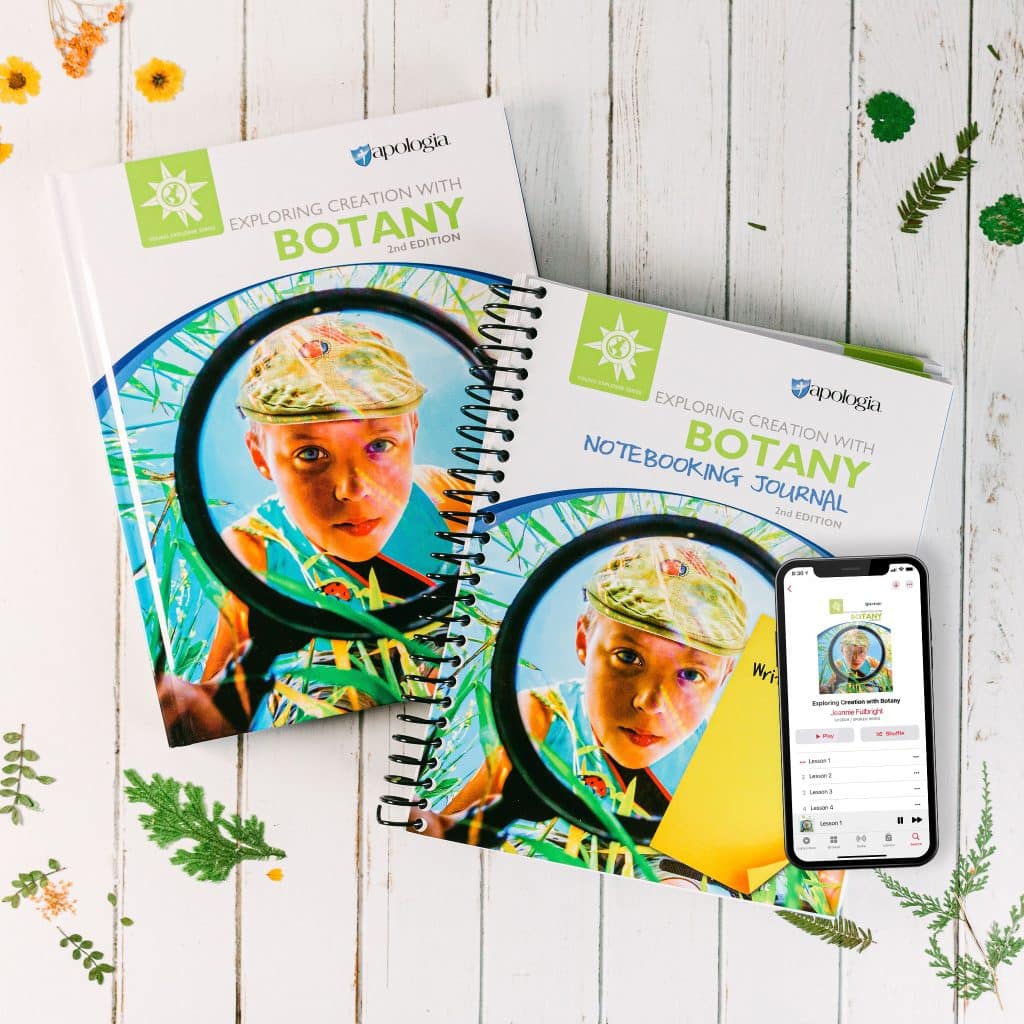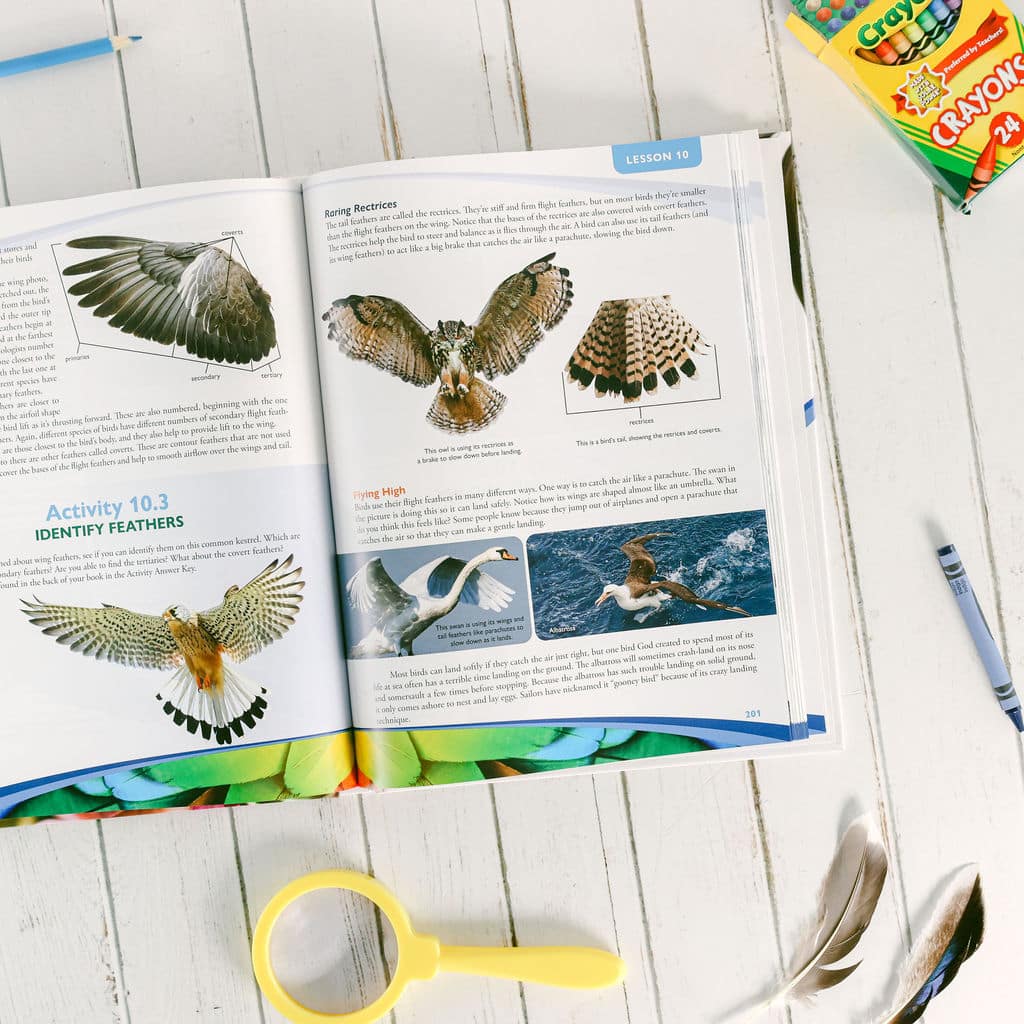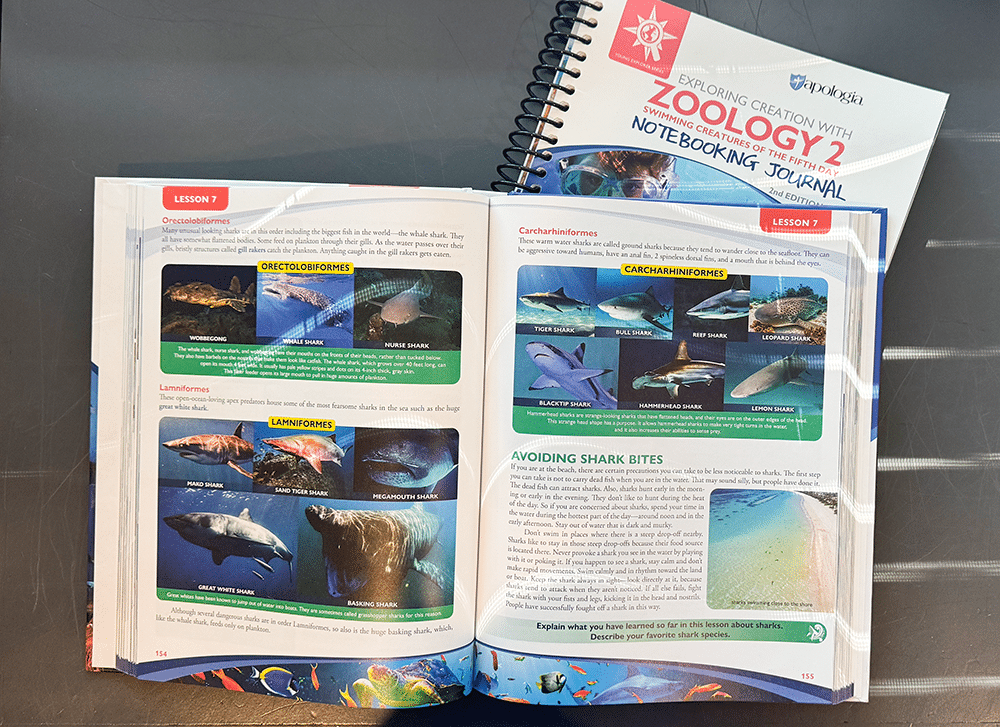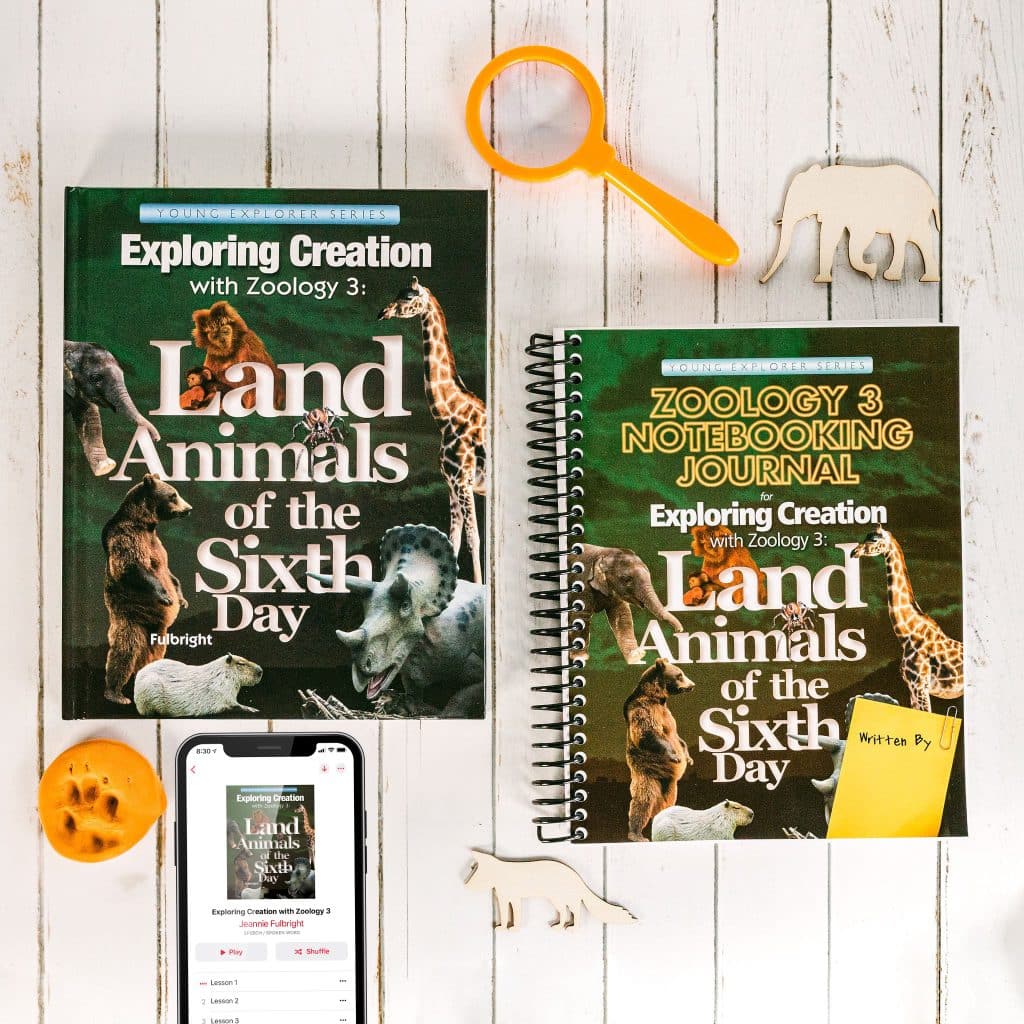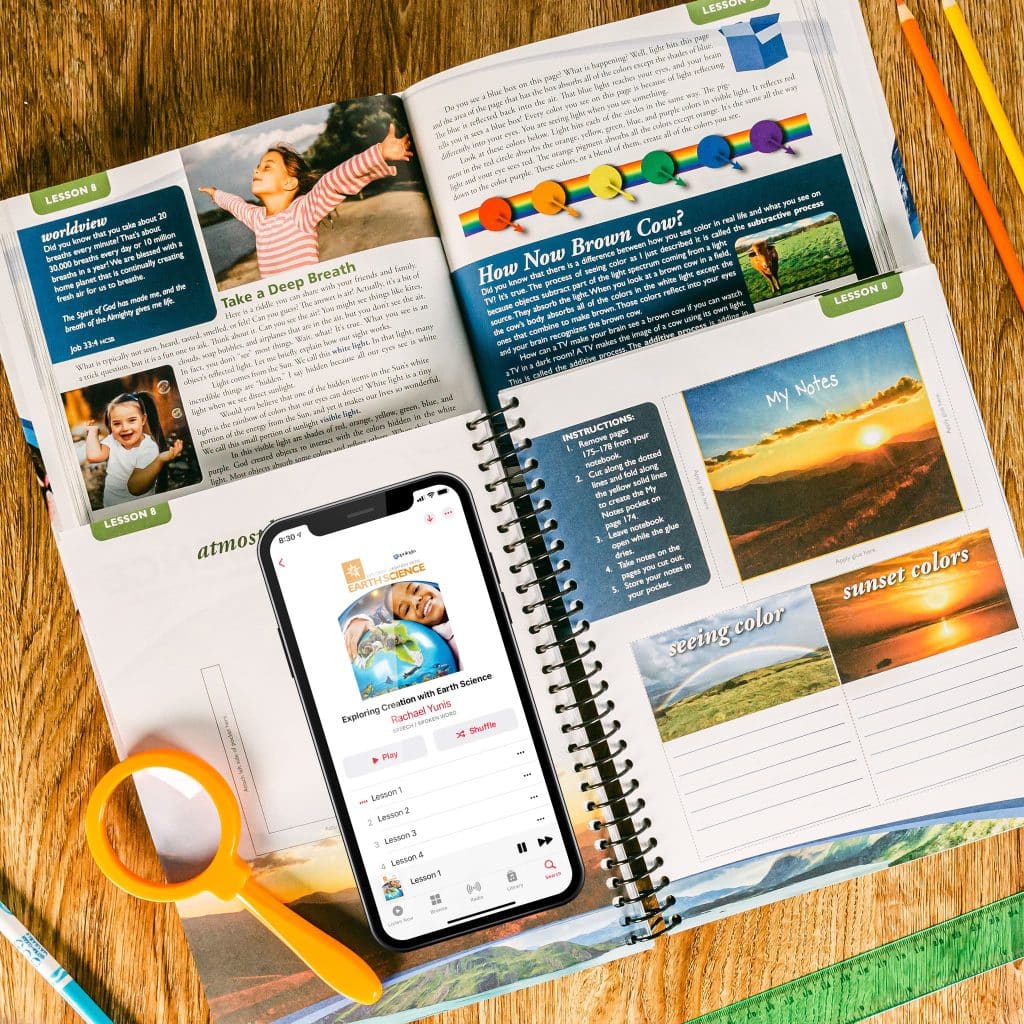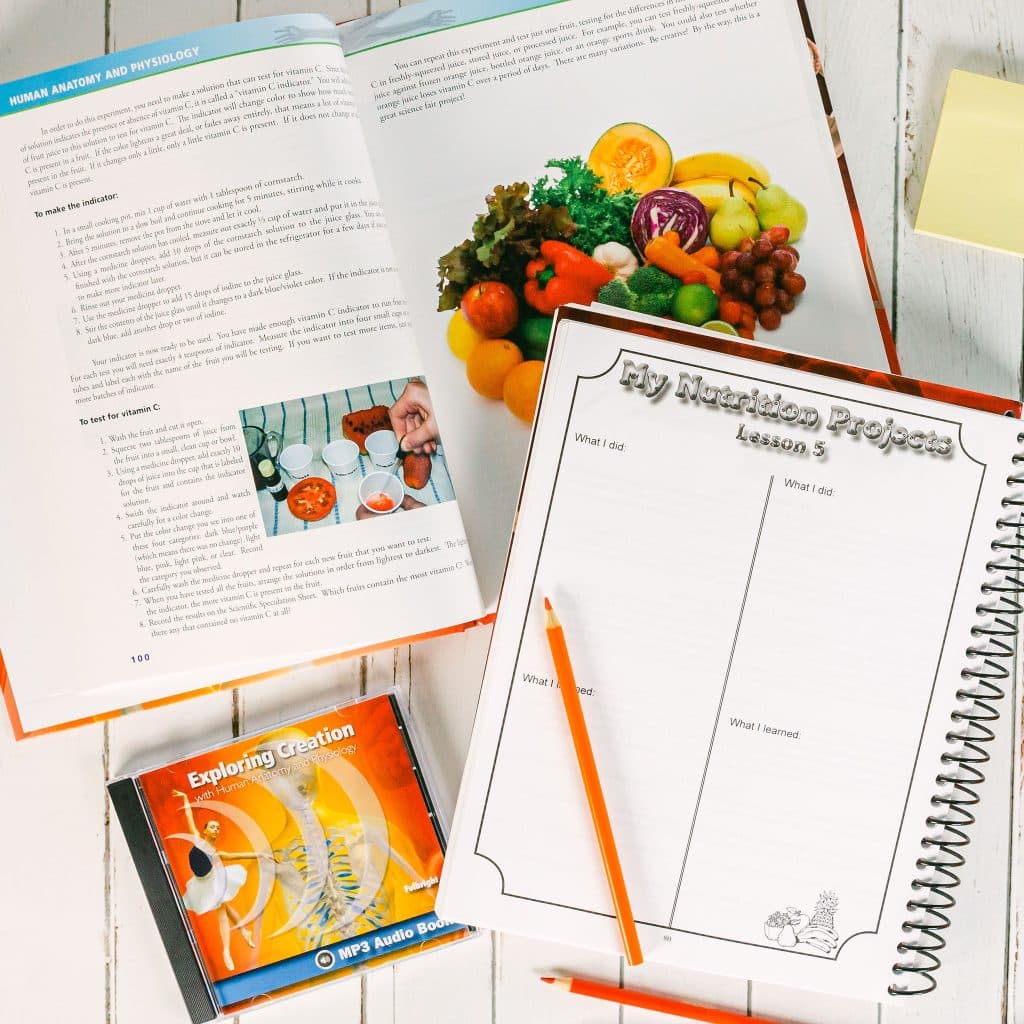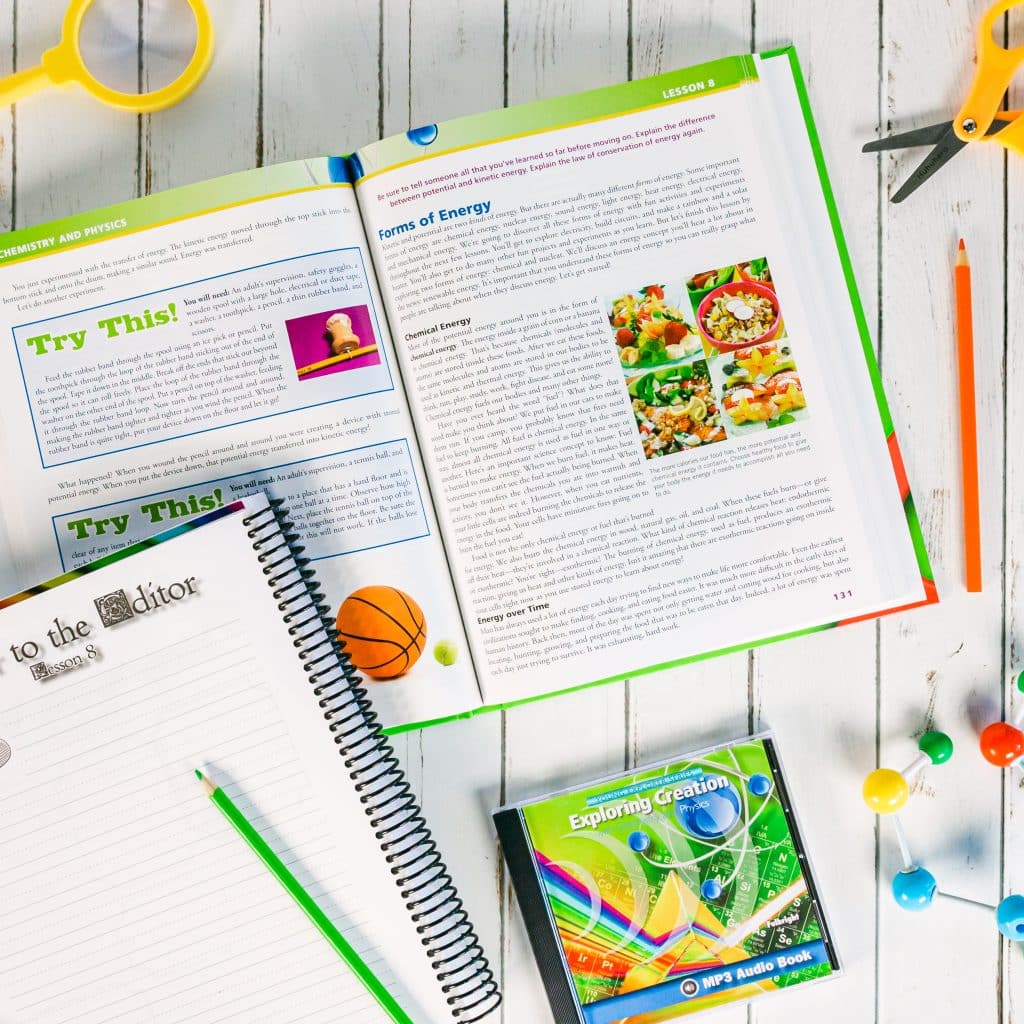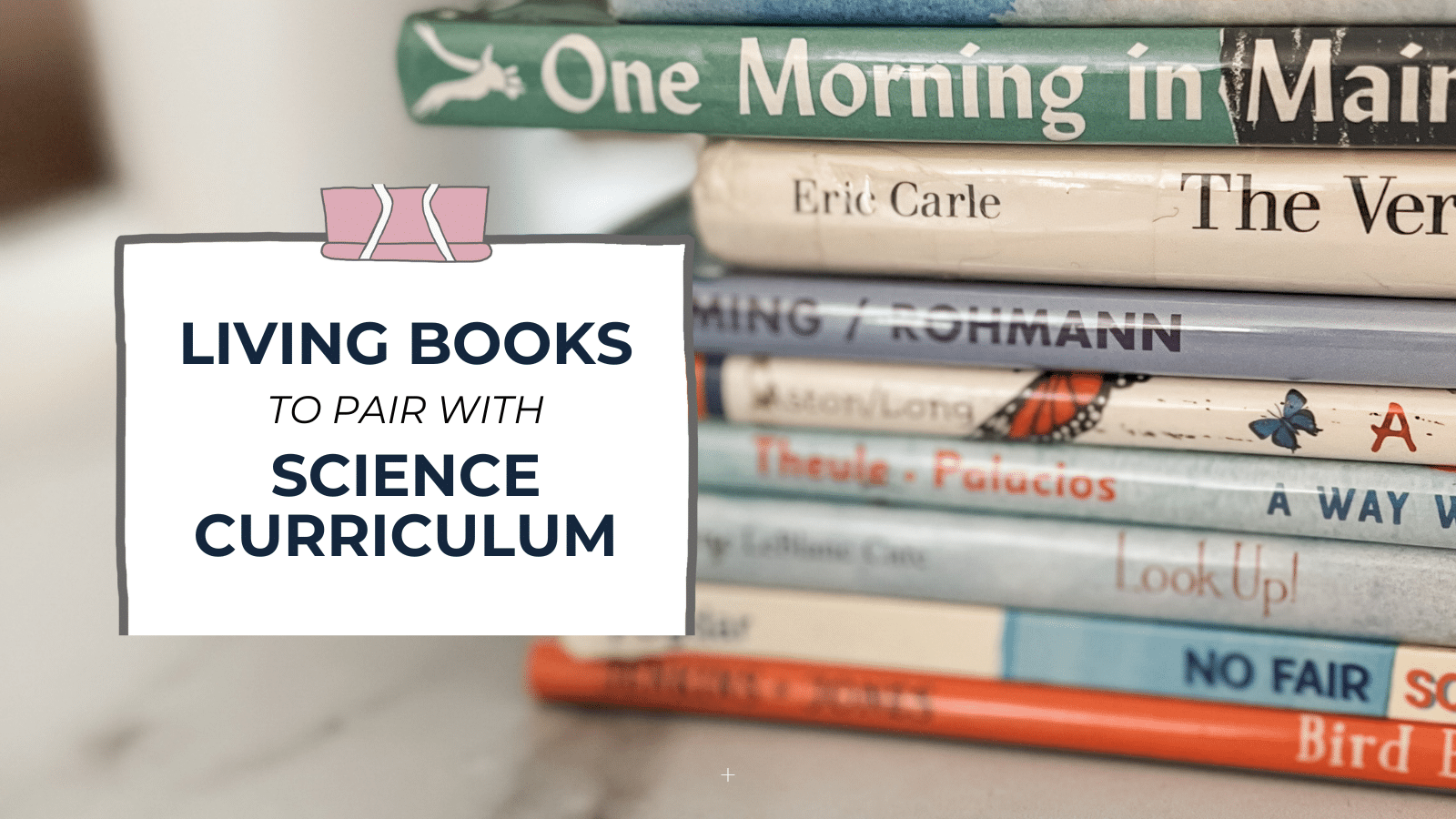
Living Books for Science
At Apologia, we are passionate about the principles of education by Charlotte Mason. Markedly, her emphasis on sharing living ideas with children and respecting their personhood as learners has greatly impacted the design and effort of our curriculum. Subsequently, in our Young Explorer’s Science series, each book is thoughtfully written with your children’s appetite in mind.
Self Education
What do you consider to be the primary goals in your children’s education? You may initially land on good grades. Maybe covering a wide variety of subjects sounds nice. Perhaps even earning a scholarship to a renowned university. However, what good would any of that be without developing a foundational love of learning? Providing a feast of living ideas to students and awakening their minds to the truth, beauty, and goodness of God’s creation can help stimulate the practice of self-education while they are still young.
The question is not, — how much does the youth know? when he has finished his education — but how much does he care? and about how many orders of things does he care? In fact, how large is the room in which he finds his feet set? and, therefore, how full is the life he has before him?”
―
What are Living Books?
A forward thinker of her time, Miss Mason introduced the idea of using living books. Living books are typically authored by a single person who writes with a passion for their subject, which makes it easy to leave a lasting impression. Our science textbooks are all written by enthusiastic experts in a conversational style to draw students into exploring God’s creation.
Children must have books, living books; the best are not too good for them; anything less than the best is not good enough – Charlotte Mason
A living book is simply one that inspires living ideas, is driven by the power of the story, and engages the reader into wanting to learn more. Living books can easily be paired with a formal curriculum to enhance the flavor of the feast. In some cases, living books can also be the curriculum, but for science, we highly recommend pairing them with a thorough curriculum for the best experience.
Living Books + Science Curriculum
Where do you start? Well, you’re in the right place! We’ve created a living books list to pair with each of our Young Explorer Science series for elementary grades. While you can choose the order of when you do which science course, here is a suggested scope of sequence for your convenience.
Astronomy Science Curriculum and Living Books
Our elementary Astronomy science course explores the far reaches of the universe and points students to the God that created it. Written by author Jeannie Fulbright, your student’s curiosity about space will soar with this study!
If you want an enhanced experience with this course, we highly suggest the downloadable audio version read aloud by Jeannie Fulbright to supplement your study.
Here are some fantastic living books we found that would complement any study of elementary astronomy. Always check your local library first, as many of these titles are in public circulation.
- Mission to Mars by Franklyn M. Branley
- Look to the Stars by Buzz Aldrin
- Pluto’s Secret by Margaret A. Weitekamp with David DeVorkin
- Listening to the Stars: Jocelyn Bell Burnell Discovers Pulsars by Jodie Parachini
- One Giant Leap: The Story of Neil Armstrong by Don Brown
- Caroline’s Comets, A True Story by Emily Arnold McCully
- Starry Messenger, Galileo Galilei by Peter Sis
- Annie Jump Cannon, Astronomer by Carole Gerber
- Always Looking Up, Nancy Grace Roman, Astronomer by Laura Gehl
- Sun Up, Sun Down, The Story of Day and Night by Jacqui Bailey
- Sailing Home, A Story of a Childhood at Sea by Gloria Rand
- The Girl Who Named Pluto, the Story of Venetia Burney by Alice B. McGinty
Read this blog post if you would like more on this topic.
Botany Science Curriculum and Living Books
Throughout Exploring Creation with Botany, your student will navigate lessons and activities that unravel the mysteries of the plant world, from the life cycle of seeds to the intricate processes of plant reproduction and food production. Additionally, they will gain proficiency in identifying and classifying various plants.
- Living Sunlight: How Plants Bring the Earth to Life by Molly Bang
- Poisons in Our Path: Plants That Harm and Heal by Anne Ophelia Dowden
- The Hike by Alison Farrell
- The Golden Glow by Benjamin Flouw
- A Man for All Seasons: the Life of George Washington Carver by Stephen Krensky
- How a Seed Grows by Helene J. Jordan
- Planting a Wild Garden by Kathryn Osebold Galbraith
- Weeds Find a Way by Cynthia Jenson-Elliott
- Up in the Garden and Down in the Dirt by Kate Messner
- Planting Peace: the Story of Wangari Maathai by Gwendolyn Hooks
- The Girl Who Drew Butterflies: How Maria Merian’s Art Changed Science by Joyce Sidman
- Beatrix Potter, Scientist by Lindsay H. Metcalf
Read this blog post if you would like more on this topic.
Flying Creatures Science Curriculum and Living Books
In Apologia’s Exploring Creation with Zoology 1: Flying Creatures, 2nd Edition, students will soar to new heights as they learn about the dynamics of flight and the uniqueness of birds, the value and misconceptions of bats, and the anatomy of insects (they’ll even get to collect and study some for a project!). After students complete this zoology study, they will never view or interact with nature in the same way again.
Here are some amazing living books about flying creatures that would pair well with any study on birds and insects. Many of these are popular enough to be found at your local library!
- A Way with Wild Things by Larissa Theule
- The Bug Girl: A True Story by Sophia Spencer
- A Butterfly is Patient by Dianna Hutts Aston
- Honeybee: the Busy Life of Apis Mellifera by Candace Fleming
- A Very Lonely Firefly by Eric Carle
- Pterosaurs: Rulers of the Skies in the Dinosaur Age by Caroline Arnold
- The Secrets of Animal Flight by Nic Bishop
- One Morning in Maine by Robert McCloskey
- Mr. Popper’s Penguins by Richard Atwater
- Tiger with Wings: The Great Horned Owl by Barbara Juster Esbensen
- Bird Build a Nest by Martin Jenkins
- No Fair Science Fair by Nancy Poydar
- Look Up!: Bird-Watching in Your Own Backyard by Annette Cate
- The Journey: Stories of Migration by Cynthia Rylant
- The Laws Guide to Nature Drawing and Journaling by John Muir Laws
Read this blog post if you would like more on this topic.
Swimming Creatures Science Curriculum and Living Books
Our Exploring Creation with Zoology 2: Swimming Creatures curriculum is part of the award-winning Young Explorer Series. God filled Earth’s waters with amazing marine creatures of all sizes. In this course, your student will explore the unique characteristics of swimming creatures of all sizes and better understand the environments they live in.
- The Girl Who Built an Ocean: an Artist, an Argonaut, and the True Story of the World’s First Aquarium by Jess Keating
- Otis & Will Discover the Deep: the Record-Setting Dive of the Bathyspere by Barb Rosenstock
- The Brilliant Deep: Rebuilding the World’s Coral Reefs: the Story of Ken Nedimyer and the Coral Restoration Foundation by Kate Messner
- Elizabeth, Queen of the Seas by Lynne Cox
- Ice Whale by Jean Craighead George
- A House for Hermit Crab by Eric Carle
- Twenty Thousand Leagues Under the Sea by Jules Verne
- Yoshi and the Ocean: A Sea Turtle’s Incredible Journey Home by Lindsay Moore
- Joan Proctor, Dragon Doctor by Patricia Valdez
- Shark Lady: the True Story of How Eugenie Clark Became the Ocean’s Most Fearless Scientist by Jess Keating
- Kermit the Hermit by Bill Peet
- A City Under the Sea: Life in the Coral Reef by Norbert Wu
- Tiger with Wings: the Great Horned Owl by Barbara Juster Esbensen
- Turtle, Turtle, Watch Out! by April Pulley Sayre
- Hello Ocean by Pam Munoz Ryan
Read this blog post if you would like more on this topic.
Land Animals Science Curriculum and Living Books
There are 13 lessons in this one-year Zoology 3 course. Detailed lesson plans, as well as a suggested daily schedule, are included in the notebooking journal. This will set you and your student up for success as they work through the course while also providing flexibility to meet your student’s and your family’s needs.
- The Way Life Works: The Science Lover’s Illustrated Guide to How Life Grows, Develops, Reproduces, and Gets Along by Mahlon Hoagland
- Christian Liberty Nature Reader Book 5
- The Burgess Animal Book for Children by Thornton Burgess
- Song of the Wild: A First Book of Animals by Nicola Davies
- Jabuti the Tortoise: A Trickster Tale from the Amazon by Gerald McDermott
- Dinosaur Mountain: Digging into the Jurassic Age by Deborah Kogan Ray
- All Creatures Great and Small by James Herriot
- My Family and Other Animals by Gerald Malcolm Durrell
- Wild Animals I Have Known by Ernest Thompson Seton
- The Tale of Peter Rabbit by Beatrix Potter
- James Herriot’s Treasury for Children by James Herriot
- A Butterfly is Patient by Dianna Hutts Aston
- Paddle to the Sea by Holling Clancy Holling
- John Muir: Naturalist, Writer, and Guardian of the North American Wilderness by Sally Tolan
Read this blog post for more on this topic.
Earth Science Curriculum and Living Books
Your young explorer will begin by learning about the universe, the Earth, and what makes Earth special and capable of sustaining life. Their awareness of the world and its Creator will expand as they learn about the land, locations, atmospheres, and climates of our planet.
I am so excited to personally use Exploring Creation with Earth Science with my soon-to-be 4th grader this school year!
- Somewhere in the World Right Now by Stacey Schuett
- Over and Under the Pond by Kate Messner
- Drop: An Adventure Through the Water Cycle by Emily Kate Moon
- Home on the Earth: A Song About Earth’s Layers by Laura Purdie Salas
- Sounds All Around by Wendy Pfeffer
- A Seed Grows by Antoinette Portis
- Wonder Walkers by Micha Archer
- The Mess That We Made by Michelle Lord
- Rumble and Roar: Sound Around the World by Sue Fliess
- Follow the Water From Brook to Ocean by Arthur Dorros
- Our Planet! There’s No Place Like Earth by Stacy McAnulty
- Snowflake Bentley by Jacqueline Briggs Martin
- The Man Who Named the Clouds by Julie Hanna
- The Snowflake Man: A Biography of Wilson A. Bentley by Duncan C. Blanchard
Read this blog post for more on this topic.
Anatomy and Physiology Science Curriculum and Living Books
Our Exploring Creation with Human Anatomy and Physiology science curriculum is part of Apologia’s award-winning Young Explorer Series and a curriculum specifically designed for elementary students in grades K-6. God made the human body wonderfully. In this course, your student will explore the intricate and amazing design of the human body–from head to toe.
- The Way We Work: Getting to Know the Amazing Human Body by David Macaulay
- Heart and Soul: The Story of Florence Nightingale by Gena K. Gorrell
- Gifted Hands: The Ben Carson Story by Cecil Murphey and Ben Carson
- Eye: How it Works by David Macaulay
- The Ears by Beth Ferguson
- A Drop of Blood by Paul Showers
- I Know Why I Brush My Teeth by Kate Rowan
- I’m Growing by Aliki
- Wonders of the Human Body by Anthony Ravielli
- What’s Inside of Me? by Herbert Zim
- Christian Liberty Nature Reader, Book 5 by Worthington Hooker
- Men of Medicine by Katharine Shippen
- Exploring the History of Medicine by John Hudson Tiner
- Louis Pasteur: Enemy of Disease by Carol Greene
- Louis Pasteur by Maria Isabel Sanchez
- Fearfully and Wonderfully Made by Philip Yancey
Read this blog post for more on this topic.
Chemistry and Physics Science Curriculum and Living Books
Apologia’s Exploring Creation with Chemistry and Physics course is written in a conversational tone, and takes complex and abstract concepts and makes them approachable for curious young minds. As your student engages with the lessons, projects, and experiments, they will better understand the fascinating world of chemistry and physics, and the Master Designer who created it all.
Throughout this course, they’ll study and explore the basic building blocks of creation, atoms and molecules, simple chemicals, the laws of motion, energy in its many forms, as well as concepts of electricity and magnetism. Your student will get to put their learning to work as they have fun making a bouncy ball, developing a smoke bomb, building a solar oven, constructing a working periscope, fashioning a miniature motor, and creating a lava lamp!
- The Disappearing Spoon by Sam Kean
- Who Was Marie Curie? by Megan Stine
- The Periodic Kingdom: Journey into the Land of Chemical Elements by P.W. Atkins
- Elements of Faith by Richard Duncan
- Robert Boyle: Trailblazer of Science by John Tiner
- What is the World Made of? All About Solids, Liquids, and Gases by Kathleen Weidner Zoehfeld
- Air is All Around You by Franklyn M. Branley
- What’s Smaller Than a Pygmy Shrew? by Robert E. Wells
- Marie Curie by Leonard Everett Fisher
- Matter All Around You: Solids, Liquids & Gases by R.J. Lefkowitz
- The Mystery of the Periodic Table by Benjamin D. Wiker (gr. 5+, 165 p.)
- Crucibles: The Story of Chemistry by Bernard Jaffe
Read this blog post for more on this topic.
Want more encouraging and resourceful homeschool content? Catch the latest episode of our homeschool podcast Let’s Talk Homeschool!


